Table of Contents
- Parenting Manga “How to Identify Delicious Vegetables”
- A Michelin two-star tempura chef teaches the secrets of delicious vegetables.
Parenting Manga “How to Identify Delicious Vegetables”






Profile
Eiichi
After working for a design company in Tokyo, he became a freelance illustrator. He is a hard-working father who creates animation, manga, and illustrations, including winning the Yubari International Fantastic Film Festival’s International Short Film Showcase Division Excellence in Animation Award.
A Michelin two-star tempura chef teaches the secrets of delicious vegetables.
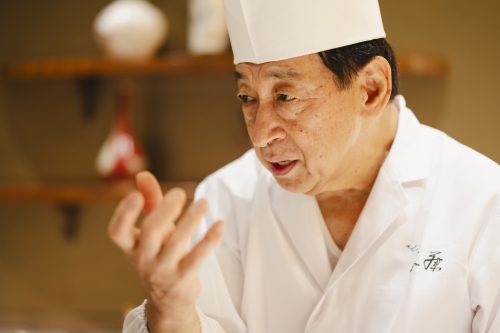
How to identify delicious vegetables from nature’s bounty
In general, when distinguishing between vegetables, it is important to know what kind of environment they were grown in, as well as when they are in season. Vegetables that are heavy and colorful when held in the hand are evidence that they have grown freely in nature’s bounty and are rich in nutrients.
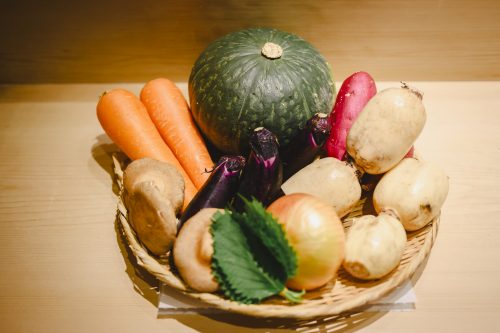
[Carrots]
A good carrot is one that is heavy, shiny, and beautifully colored when you pick it up. Select carrots that have no blemishes on the surface and that have not darkened too much at the core where the stem has been removed. We recommend the “carrots under snow,” which are harvested around March and have stored sweetness after wintering under the snow.
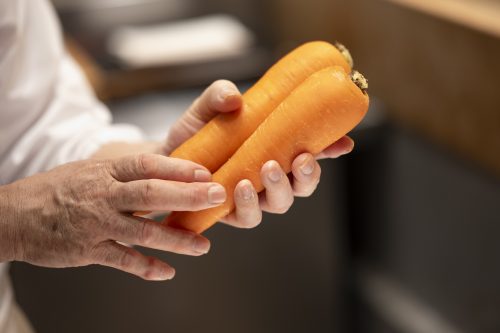
Onion
A good onion is one whose skin is moderately dry and shiny. Select onions that are firm and tight all over, without a bumpy surface. Round and heavy onions with tight necks and roots have a firm inner layer. Avoid sprouts that have sprouted from the neck, as they are less mature, less nutritious, and less flavorful.
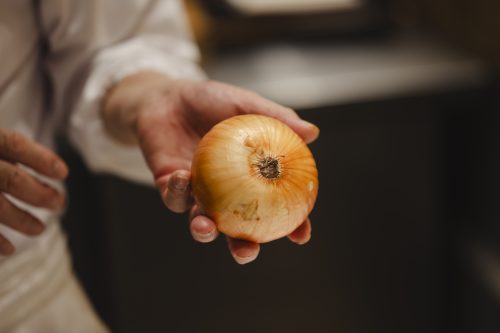
[Lentil]
Some are sold cut in the middle of the joint, but choose those with both ends of the joint remaining, as damage will progress from the cut end. Lentils grow horizontally in the soil, taking nutrients from the black bearded root to store sweetness. The surface should be free of blemishes and unevenly colored, and the shape should be chunky and small. Avoid too large ones, as they are overgrown and lack flavor.
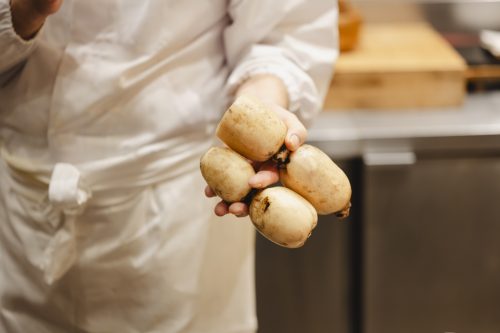
[Pumpkin]
Ideally, the cut fruit should be brightly colored, seedless, and thick-fleshed. If there are gaps in the seeds or “guts,” they are either overripe, dry, and tasteless. Select fruit that is dark green, well-shaped, and heavy when held in the hand.
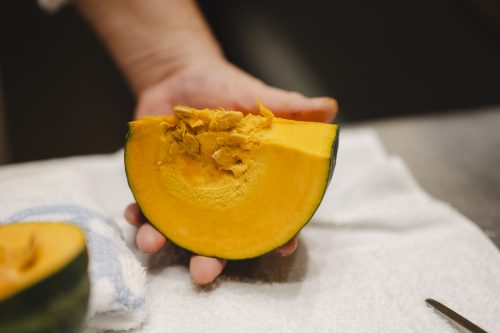
Shiitake mushroom
The aroma and flavor components of shiitake come from the folds on the underside of the umbrella, so choose the ones with the finest folds possible. Good shiitake mushrooms have thick and short stems. Log shiitake mushrooms, which are most commonly available in spring and fall, have a strong flavor and aroma, so if you are looking for the best taste, log shiitake mushrooms are recommended.
[eggplant].
Commercially available eggplants are beautifully produced, uniformly shaped, and are basically free of flavor. Select those with a deep purple color, firmness and luster. The ones that are plump and thicker on the bottom are evidence that they have stored nutrients.
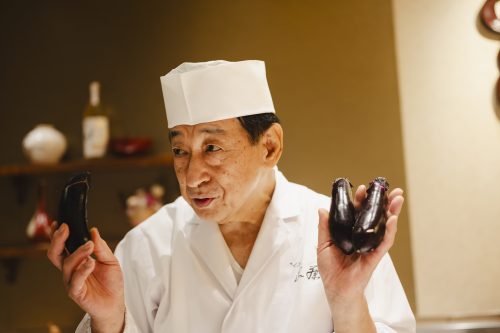
[How to store for freshness
Basically, vegetables should be stored in the refrigerator. Wrap them in kitchen paper or newspaper to keep them fresh longer. Potatoes and onions should be stored in a cool, dark, well-ventilated place, not in the refrigerator. However, if the temperature is high or the room is warm even in winter, they are easily damaged and should be stored in the refrigerator.
Tips for making delicious vegetable tempura at home The key points are quantity and oil temperature!
The two key points to making delicious tempura at home are “making the batter in proper quantities” and “keeping the oil at the right temperature for the ingredients. There is no need to think too hard, but it is important to have a firm grasp of the basics without relying on eye measurements or intuition.
[How to make a thin garment
(1) Sift the flour
Sifting makes it easier for the flour to dissolve in the egg water, resulting in crispy, light-textured tempura. When sifting, shake the sieve from a height of about 20 cm, which will allow air to enter the sieve and make the flour silky and smooth. Prepare a flour with fine particles.
(2) Beat eggs in water.
Crack one L-size egg into 500 ㏄ of water chilled in the refrigerator and beat well with rapeseed chopsticks. If water is added after the egg is beaten, it will be difficult to tell whether the egg white is well beaten or not. When the foam becomes fine, it is a sign that the egg whites are also dissolved.
(3) Add the flour to the egg water and mix.
Using a measuring cup, measure out the amount in the ratio of one part flour to one part egg water (by volume), and add the flour to the egg water in three batches. The key is to add the flour to the egg water. If you add the egg water after adding the flour to the bowl, it will be difficult to mix.
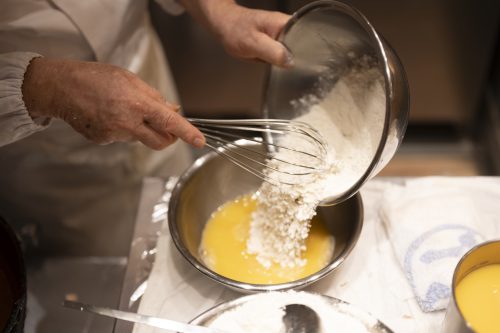
After adding the flour, mix gently with a whisk in a figure-eight motion three times each time. The batter should flow down easily with chopsticks.
[How to deep fry tempura]
(1) Flat bottomed frying pan is recommended for tempura pan.
A frying pan with a flat bottom ensures even oil temperature and prevents uneven frying. A frying pan with a diameter of about 26 cm will allow you to fry the seeds without them sticking to each other. The depth of the oil should be 3 to 4 cm.
(2) The ideal oil is an unblended vegetable oil.
We recommend oil that is not blended with other vegetable oils, such as soybean oil or rice oil. Adding a little taihaku sesame oil (freshly pressed sesame seeds) to genuine vegetable oil will produce delicious tempura that brings out the natural flavors of the ingredients.
(iii) Keep oil temperature at 170°C for vegetables and 180°C for seafood.
The optimal oil temperature for frying is 170°C or higher for vegetables and 180°C or higher for seafood. When frying three or more seeds at the same time, the oil temperature drops quickly, so start frying vegetables at 180℃, which is higher than the optimal temperature, and fish and seafood at 190℃. If you try to fry too many ingredients at once, it will be difficult to control the temperature, so it is recommended to fry small quantities at a time without being too greedy.
|
170°C |
180°C |
190°C |
|
Vegetables |
Seafood When frying three or more vegetables |
When frying three or more pieces of seafood |
|
When the batter is dropped, it sinks to the bottom of the pan with air bubbles and makes a “sizzling” sound, and then slowly rises to the surface. |
When the batter is dropped, it makes a “swishing” sound with air bubbles and sinks about halfway down the pan, then quickly floats back up. |
When the batter is dropped, it makes a high “shear” sound with air bubbles and spreads vigorously to the surface instead of sinking into the oil |
[Lentil]
Lentil, which contains a lot of tannin, discolors and becomes scaly when exposed to air, so it is important not to cut too many at once and to use them as soon as you finish cutting them.
1. Cut into 1 cm thick slices and peel quickly. Dust with flour and remove excess flour.
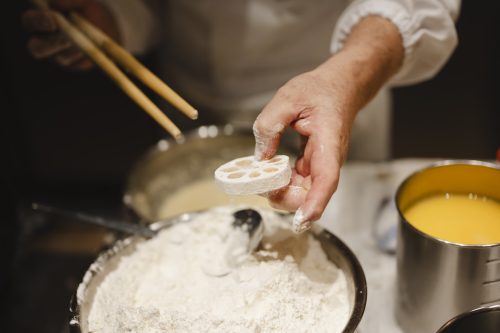
2. Dip the fish into the thin batter.
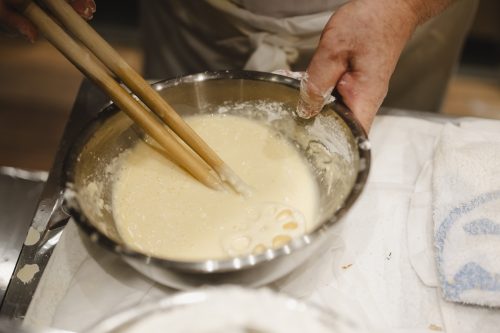
3. Place in oil.
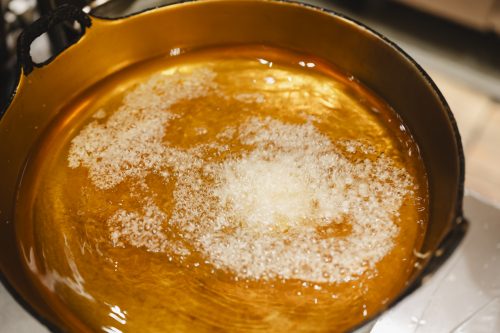
4. When the bubbles become larger and quieter, pull it out. Do not overcook too much, as the preheating will heat it up.
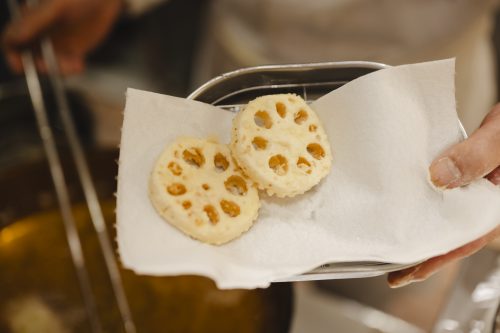
[PUMPKINS]
Cut into thicker slices and cooked slowly, the squash has a delightful, ho-hum texture. Please try it at home.
1. Remove seeds and “wadding” with a knife, cut into 3-4 cm pieces, dust with flour, and remove excess flour.
2. Dip the fish into the thin batter.
3. Place skin side down in oil.
4. When the bubbles become slightly larger and less, and the batter has set, flip the dough over. After that, turn the squash over several times to heat through at about 170℃. The skin of the squash is more tough, so fry it for about 20 minutes, switching the top and bottom.
5. When almost no bubbles appear, it is time to raise the water.
6. After removing from oil, wrap in kitchen paper and preheat to finish cooking.
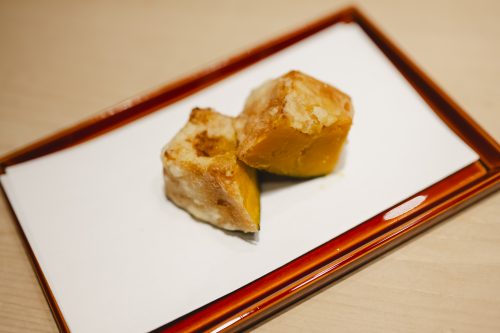
Sixty or seventy points is enough! Home cooking doesn’t have to aim for a perfect score.
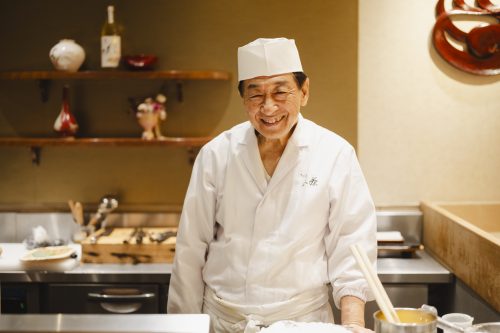
I have three sons. They too are now married and fathers, and we work together as a couple to handle the housework and childcare. For families like my sons’, who are both working and raising children, cooking every day must be a challenge. Cooking is all about how well you can cook with the ingredients you have at the time.
There is no need to be too particular about making a great dish or trying too hard to make it perfect. 60 or 70 points is good enough. 100 points can be achieved at a specialty restaurant. As for the vegetable tempura I mentioned, you just need to make sure you get the batter and oil temperature just right. I am sure your children will be delighted to eat the tempura that Dad makes, so please give it a try.












